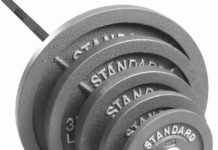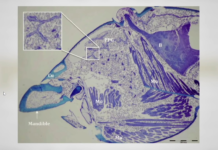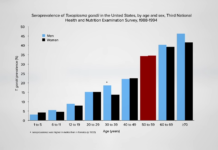Table of Contents
A low-fiber diet is a type of diet that restricts the amount of dietary fiber consumed. It may be prescribed for certain medical conditions, such as irritable bowel syndrome (IBS), diverticulitis, and Crohn's disease.
A low-fiber diet typically includes foods that are low in fiber content, such as white bread, white rice, cooked vegetables without the skin, and peeled fruits.
A low-fiber diet is different from a no-fiber diet, which does not contain any fiber whatsoever.
Instead, a low-fiber diet is designed to reduce the amount of fiber in the diet, rather than eliminating it altogether. While fiber is a beneficial part of a healthy diet, reducing the amount of fiber can be helpful when managing digestive problems.
The goal of a low-fiber diet is to reduce irritation to the gastrointestinal tract. This can help reduce symptoms such as abdominal pain, nausea, bloating, and gas.
A low-fiber diet should only be followed with doctor’s approval and guidance from a registered dietitian.
Additionally, it is important to talk to your doctor about any medications you are taking as some may need to be adjusted when starting a low-fiber diet.
Overview: Why a Low-Fiber Diet?
A low-fiber diet may be recommended if you have certain gastrointestinal conditions, such as Crohn’s disease, ulcerative colitis, or irritable bowel syndrome.
This type of diet can help to reduce symptoms, such as abdominal pain, bloating, and diarrhea. Fiber is a type of carbohydrate found in plant-based foods that cannot be broken down by the digestive system.
A low-fiber diet restricts the amount of fiber consumed to less than 10 grams per day.
By reducing the amount of fiber in your diet, the intestine has an easier time digesting the food that passes through it. This can help reduce symptoms like abdominal cramping, bloating, and diarrhea.
Additionally, some research suggests that a low-fiber diet can help reduce inflammation in the gut, which can reduce the severity of symptoms associated with certain gastrointestinal conditions.
It’s important to note that a low-fiber diet should only be followed under the supervision of a doctor or healthcare professional. If you are considering a low-fiber diet, speak to a physician or registered dietitian to make sure it is the right option for you.
Fiber Content
For those on a low-fiber diet, it is important to understand the types of food that have a low-fiber content.
Low-fiber foods are generally those that are cooked or processed, including canned fruits and vegetables, dairy products, and starches such as white rice, noodles, and pasta.
Foods with a higher fiber content include legumes, beans, nuts, grains, and certain fruits and vegetables. However, these can still be consumed in very small amounts.
When consuming foods with higher fiber content, it is important to watch for signs of digestive distress or discomfort.
If you experience any of these symptoms, it is recommended that you speak with your doctor or registered dietitian about appropriate portion sizes and limits for this type of food.
Health Considerations of Low-Fiber Diets
When considering a low-fiber diet, it is important to speak to a physician or registered dietitian before starting a low-fiber diet. The following health considerations should be taken into account when adopting a low-fiber diet.
A low-fiber diet can cause constipation, as fiber helps with digestion and bulk. Adequate fluid intake is also important for preventing constipation.
Without adequate fluids, it can be difficult for the body to digest food properly. If constipation does occur, laxatives may be recommended.
A low-fiber diet can also lead to an increased risk of gastrointestinal issues, such as bloating, flatulence, and diarrhea. It is important to monitor these issues, as they can worsen if not addressed.
A low-fiber diet can also lead to a deficiency in certain vitamins, minerals, and other nutrients, so dietary supplements may be necessary.
To ensure that these health considerations are accounted for, speak to a doctor or dietitian before beginning a low-fiber diet.
Preparation Tips
When following a low-fiber diet, it is important to know how to prepare food in a way that adheres to dietary restrictions. While there are many potential restrictions on certain foods, there are tips to make the process of preparing and cooking meals easier.
To begin, it is best to focus on simple foods that don’t require much preparation. Think pre-made sides that only require heating, pre-marinated or pre-seasoned meats, canned vegetables like green beans or carrots, and other processed and convenient items like soups or broths. These options provide an easy way to begin a low-fiber meal plan.
Fruits and vegetables with edible skins, such as bell peppers and tomatoes, can be consumed if they are peeled and the seeds and skin are removed.
Legumes, whole grains, nuts, and seeds should all be avoided.
Cooked cereal grains without added fiber can be consumed, such as white rice, couscous, and plain quinoa.
When cooking foods, steaming and boiling are the best methods since they will reduce the fiber content. It is important to avoid pan frying or deep frying foods.
Also, be sure to strain any liquids used in the cooking process, such as stock, broth, or juices, as this will also help reduce the fiber content.
Following these preparation tips can make it easier to adhere to a low-fiber diet. Be sure to speak to a doctor or registered dietitian to ensure you are taking the necessary steps to safely follow a low-fiber diet.
Meal Ideas for a Low-Fiber Diet
When on a low-fiber diet, it is important to ensure you are eating enough nutritious and flavorful meals. There are lots of meal ideas to consider when following a low-fiber diet. When making meals, consider the following components:
- Main Dishes
- Sides
- Desserts
Main dishes like soft cooked eggs, chicken or turkey soup, macaroni and cheese, mashed potatoes, cottage cheese and applesauce are all low-fiber options.
For sides, try serving steamed vegetables like broccoli, carrots, and cauliflower as long as they’re soft. For dessert, try a fruit smoothie, pudding made with canned or cooked fruit, or an ice pop.
Stir-fries and other dishes with soft vegetables can also be a great way to get more nutrients into meals.
Legumes like black beans and chickpeas should generally be avoided on a low-fiber diet but some people may be able to tolerate them if cooked very soft.
Additionally, dairy products like milk, yogurt, and cheese are generally tolerated on a low-fiber diet.
Additionally, processed meats such as hot dogs, bacon, and sausage are all generally tolerated on a low-fiber diet although it is best to limit their consumption due to potential health concerns.
Finally, baked goods made with white rice flour, mashed potatoes, and other low-fiber flours are also a good option for snacks and desserts.
Other Considerations
When following a low-fiber diet, there are certain medications, dietary supplements, and other alterations that you should be aware of.
It is important to speak to your doctor and/or a registered dietitian to ensure you're taking the right precautions.
Certain medications may interact with low-fiber foods and can lead to adverse reactions. Your healthcare provider will be able to advise which medications to avoid while on a low-fiber diet.
Additionally, certain dietary supplements may be necessary to ensure proper nutrient intake. You may need to take additional vitamins and minerals, such as iron or calcium, regularly.
It is also important to be mindful of any food allergies when following a low-fiber diet. Make sure to take steps to avoid any foods that could trigger an allergy or intolerance.
Additionally, you may need to make changes to the way you store and prepare your food if you have a compromised immune system or other health condition.
Dining Out
When dining out on a low-fiber diet, it’s important to be mindful of the ingredients used in restaurant meals. Choose foods that are cooked and served plain, without added sauces or spices.
Pay extra attention to menus, read nutritional facts listed about dishes, and ask the waiter for further clarification if needed.
Avoid breaded dishes, whole grain flours, and high fiber fruits such as apples and pears.
When possible, opt for steamed vegetables with sauces on the side, and lean proteins such as chicken, fish, and beans.
Grilled or baked items are also acceptable, but watch out for added ingredients like breadcrumbs, which can add too much fiber to a meal.
Choose desserts that are not fried, such as custards, mousses, or ice cream.
In addition to the menu, take into account the size of your portion. Eating smaller portion sizes can help lower the overall fiber count of a meal, and prevent issues from overconsumption.
Low-Fiber Diet Recipes
A low-fiber diet is best supported by food recipes and resources that are specifically catered to this restriction.
While it can be difficult to find tasty, low-fiber meals, there are many creative ways to get the nutrients you need while still following a low-fiber diet.
One great way to make meals exciting is to look up easy and delicious recipes online. There are hundreds of resources dedicated to creating meals that have minimal fiber content while still having key flavors and textures.
This can include flavorful soups, stews, smoothies, and even comfort foods such as macaroni and cheese.
Another way to find low-fiber recipes is to look for low-carbohydrate versions of your favorite dishes.
Many carbohydrates contain higher levels of fiber, so reducing carbohydrate intake makes it easier to stick to a low-fiber diet.
You can still enjoy all the same dishes, like pizza, tacos, and burgers, with just a few simple modifications.
When preparing meals, it is important to be mindful of fiber content in condiments and dressings.
Selecting alternatives, such as salsa and hummus instead of ketchup and mayonnaise, can make a big difference in reducing fiber intake.
There are also many fiber-free seasonings you can use to add flavor to your meals.
Use the resources available to you to make low-fiber meals fun and flavorful. Doing research ahead of time will help you to create delicious meals that you can enjoy while still following a low-fiber diet.
FAQs: Common Questions about a Low-Fiber Diet
When following a low-fiber diet, there are some common questions that may arise. Here, we’ll provide answers to some of those questions.
- What foods should I avoid? In general, you should avoid foods that are high-fiber such as whole grains, fruits and vegetables, nuts and seeds, and legumes. You may also want to limit intake of processed foods as they may contain added fiber.
- Are there any health risks associated with following a low-fiber diet? Following a low-fiber diet can put you at risk for developing malnutrition, dehydration, constipation, and other digestive issues.
It is very important to speak with your physician before starting a low-fiber diet to ensure you do not suffer from any of these problems. - Can I still eat out? Yes, it is possible to eat out while on a low-fiber diet. However, you should be mindful of menu items that may contain fiber. Look for dishes with steamed vegetables or potatoes, cooked lean meats, or other simple ingredients.
Additionally, using condiments and dressings sparingly may help you stay within the parameters of a low-fiber diet. - Are dietary supplements necessary? Your physician may recommend certain dietary supplements, such as vitamin or mineral supplements, while following a low-fiber diet. This is especially true if your diet lacks certain essential nutrients.
Disaster Planning
It is important to prepare for any potential complications and emergencies when following a low-fiber diet. While the diet does pose many potential advantages, it is important to remain aware of the risks associated with this type of eating plan.
Here are a few tips to ensure that you are prepared should an emergency situation arise:
- Speak with your doctor before making any changes to your diet.
- Understand the signs and symptoms of food intolerance or digestive issues.
- Know what foods are considered low-fiber and which ones to avoid.
- Be aware of any medications or dietary supplements you may need when on a low-fiber diet.
- Have a backup plan for meals if you find yourself in an emergency situation.
- Ensure that you have adequate access to laxatives and other products that can help ease any digestive issues that may arise.
By being proactive and having a plan in place, you will be better prepared for any potential disasters that may arise when following a low-fiber diet.
It is important to understand that following this type of diet requires extra precautions and that speaking to a healthcare professional is an essential step in preparation.
Low-Fiber Diet Guide
A low-fiber diet is a special eating plan that restricts the amount of dietary fiber in a person’s meals.
It may be recommended by a doctor or registered dietitian when someone suffers from gastrointestinal conditions, such as irritable bowel syndrome or diverticulitis.
Eating foods with a low-fiber content can help to manage abdominal pain, bloating and other troublesome symptoms.
It is very important that people speak to their doctor or healthcare professional before starting any type of low-fiber diet.
In this guide, we will look at the types of foods that should be consumed on a low-fiber diet, health considerations, meal ideas, and other tips for managing a low-fiber diet. By following this guide, you can learn how to manage a low-fiber diet in a safe and healthy way.
FAQ about Low-Fiber Diet
What is a Low-Fiber Diet?
A low-fiber diet involves eliminating high-fiber foods from the diet. This type of diet is often recommended by doctors and nutritionists to allow the digestive system to rest.
It is usually prescribed for those who are suffering from digestive conditions such as diverticulitis, Crohn's disease, and ulcerative colitis.
Key Points:
– Involves eliminating high-fiber foods
– Recommended to allow digestive system to rest
– Prescribed for those with digestive conditions
What Are the Benefits of a Low-Fiber Diet?
The main benefit of reducing fiber in your diet is that it allows your gut to heal and rest.
This can help reduce inflammation and pain associated with chronic digestive conditions.
A low-fiber diet may also benefit individuals who are prone to bloating or constipation.
Key Points:
– Allows gut to heal and rest
– Reduces inflammation and pain
– May benefit those prone to bloating or constipation
How Long Can You Stay on a Low-Fiber Diet?
The length of time an individual stays on a low-fiber diet depends on the underlying condition being treated.
Generally, it should only be used for a few weeks at a time and monitored closely by a physician.
Additionally, once the condition is managed, fiber should be slowly reintroduced into the diet.
Key Points:
– Length of time dependent on underlying condition
– Should only be used for a few weeks
– Fiber should be slowly reintrodcued
What Foods Are Allowed on a Low-Fiber Diet?
Foods that are allowed on a low-fiber diet typically include refined grains and starches, canned/cooked fruits and vegetables, eggs, milk, cheese, tofu, meat and poultry (with no skin), and oils and fats.
Key Points:
– Refined grains and starches
– Canned/cooked fruits and vegetables
– Eggs, milk, cheese, tofu, meat and poultry
– Oils and fats
What Foods Are Not Allowed on a Low-Fiber Diet?
Foods that should not be included on a low-fiber diet include fresh fruits and vegetables, nuts and seeds, legumes and beans, whole grains, raw fruits and vegetables, and high-fiber cereals and bread.
Key Points:
– Fresh fruits and vegetables
– Nuts and seeds
– Legumes and beans
– Whole grains
– Raw fruits and vegetables
– High-fiber cereals and breads
What Drinks Are Allowed on a Low-Fiber Diet?
Drinks that are allowed on a low-fiber diet include water, coffee (without added fibrous ingredients, such as nuts), tea, juice without pulp, cream-based soups without vegetables, strained fruit and vegetable juiced, and decaffeinated drinking chocolate.
Key Points:
– Water
– Coffee (without added fibrous ingredients)
– Tea
– Juice without pulp
– Cream-based soups without vegetables
– Strained fruit and vegetable juiced
– Decaffeinated drinking chocolate
What Supplements Can I Take on a Low-Fiber Diet?
Supplements may be needed when following a low-fiber diet.
Common supplements taken while on this diet include multivitamins, calcium, omega-3 fatty acids, prebiotics and probiotics, and digestive enzymes.
Key Points:
– Multivitamins
– Calcium
– Omega-3 fatty acids
– Prebiotics and probiotics
– Digestive enzymes
Is a Low-Fiber Diet Healthy?
A low-fiber diet can be beneficial when used in the short-term to allow the digestive system to rest and heal.
However, it should always be monitored closely by a physician. It is important to note that some fiber is needed in the diet to maintain regular bowel movements, prevent constipation, and help lower cholesterol levels.
Therefore, while a low-fiber diet can be healthy if followed correctly, it is not recommended as a long-term solution.
Key Points:
– Can be beneficial in short-term
– Should always be monitored by physician
– Some fiber is needed in diet
– Not recommended as long-term solution
















